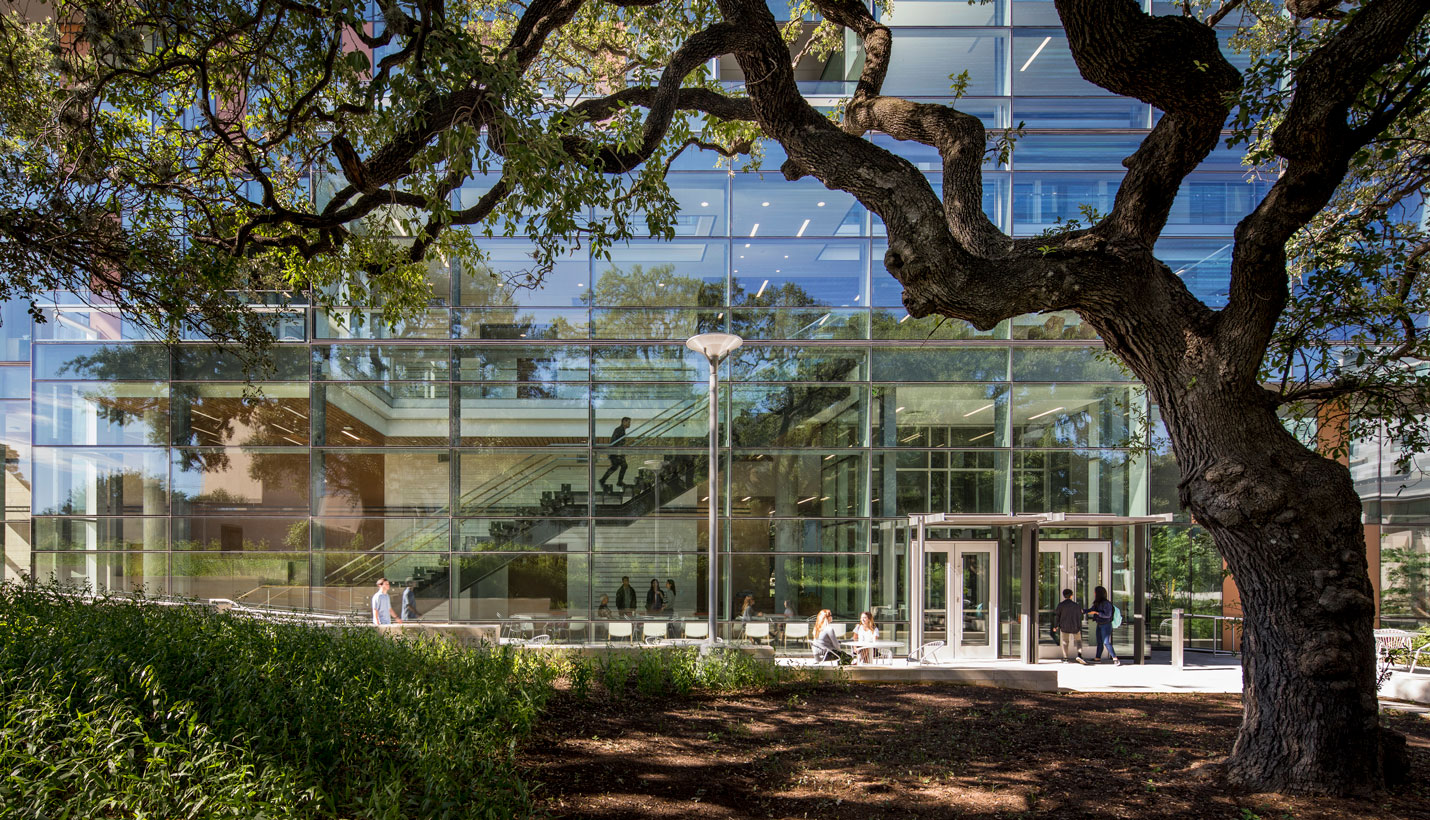

Green Trends in Higher-Ed Design
Over the last 10 years, the biggest changes I have seen in higher education projects are in the standards we now expect for green design. The bar is far higher than it was a decade ago, and it is likely to get higher in the future. Both in the range of issues we expect to be covered and the actual performance metrics for any one issue, we are getting increasingly demanding—and that’s a good thing.
I see three top trends:
- Universities seem less inclined to buy into certification programs and more inclined to “go it on their own” with their own priorities for green design. Combining various aspects of LEED, SITES and WELL may be more appealing than following a path proscribed by one or more of these programs. They also often want to avoid a “check-the-box” mentality and the necessity to deal with what may be cumbersome verification processes.
- Green design seems to be more and more about healthy buildings that support healthy lifestyles. This includes greater emphasis on a whole range of health issues from indoor air quality to encouraging able bodied people to take stairs rather than elevators. More and more, it seems unacceptable to consider an environment sustainable if it does not enhance both mental and physical health.
- The scope and scale of green design has grown to reach way beyond the individual building. Site design, storm water removal, landscape design and impact on urban and regional development seem absolutely central to sustainability. Resiliency both in terms of avoiding and mitigating catastrophic events is front and center in green design.
The Dell Medical School (DMS) District is a good example how green trends are playing out in our projects. As one of the few districts recognized by SITES, the DMS health district sits on 16.2 acres in central Austin that include an urban stream, Waller Creek. Landscape design has improved the ecological function of the creek corridor by removing invasive species, stabilizing the banks and diversifying the native plant community. Because multiple large facilities were constructed in a dense urban floodplain, plans carefully maximize the use of space, minimize unnecessary disturbance to the creek and improve floodplain function. The health district’s formal plantings make it an urban, native plant oasis that provides ecological and health benefits while reducing irrigation needs by over 75 percent.
LEED Gold certified, the 85,000-square-foot Health Learning Building design is based on the inextricable link between learning, health and the built environment. For the Health Learning Building, the project team utilized a whole building approach to energy modeling and life cycle cost analysis to evaluate energy strategies and design the building to achieve 44 percent energy savings. Among the many health and nature oriented sustainable features in the building are 1) natural light and nature views for almost all work spaces; 2) outdoor spaces on every floor with terraces on the lower floors oriented to the courtyard and on the top floor oriented to views of downtown Austin and the State Capitol; 3) all of the vegetation installed onsite is native and adaptive, resulting in restoration of 36 percent of the total campus site; 4) a monumental stair along the north glass wall to encourage occupants to move through the building using the stair rather than the elevator; 5) the building’s envelope has a 45% window to wall ratio but has an envelope design that is 50 percent better than baseline; 6) fresh outdoor air monitored to promote occupant comfort and healthy CO2 levels; 7) indoor finishes that are low-emitting healthy materials like terrazzo, no-VOC paints, CRI green label cradle-to-cradle silver certified carpets; 8) flexible furniture with adjustable height tables to accommodate active changes in work and study modes.
Page is the design architect for the Health Learning Building, which serves as the educational center, in association with The SLAM Collaborative. Sasaki is the lead consultant on the design team of the master plan, which Page was a part of as well.
This blog is an excerpt from Red-Hot Green Design Trends in Higher-Ed by Aziza Jackson. It was an article that was featured in the January/February issue of School Construction News.
Contributed By
Larry Speck, FAIA
02/26/2019
People
Related Posts
- When the User Is Also the Designer
- New Texas School Standards Posted for Public Comment
- Enhancing Page's Strategic and Analytic Teams
- Learning how to engineer college, university HVACs better
- Trends In Student Housing Programming, Design
- Elevating Education Through Design
- Design Excellence








